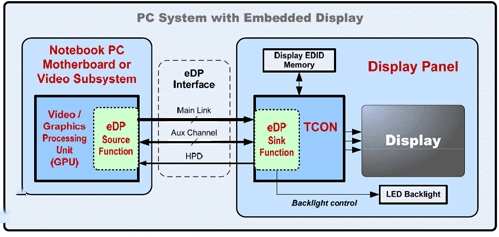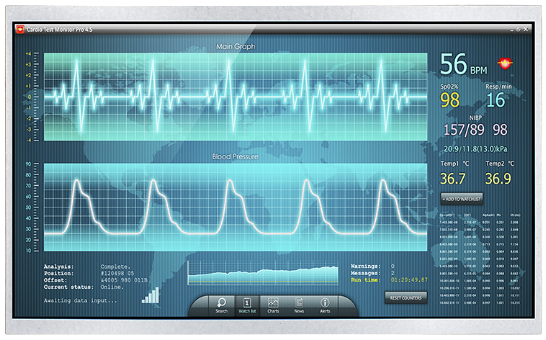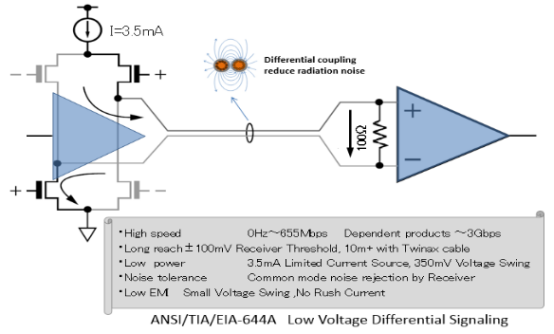eDP (Embedded DisplayPort) and LVDS (Low Voltage Differential Signaling) eDP (Embedded DisplayPort) are both commonly used video signal connectors for connecting displays or monitors in industrial computers.
Introduction of eDP interface:
eDP is an internal digital interface based on the DisplayPort architecture and protocol. It can transmit high-resolution signals with simpler connectors and fewer pins, and can achieve simultaneous transmission of multiple data. It is suitable for tablets, notebooks, all-in-one computers, and future new large-screen high-resolution mobile phones.
Advantages of eDP:
1. The micro-packet structure can transmit multiple data at the same time.
2. The data transmission rate is high, and the transmission rate of the 4PIN EDP screen can reach 21.6Gbps.
3. The size is small, with a width of 26.3mm and a thickness of 1.1mm, which is conducive to the thinness of the product.
4. The circuit is simple, no LVDS conversion circuit is required, and the design is simpler.
5. The electromagnetic interference is small.
6. It has a strong copyright protection function.

Hot Display eDP interface product recommendations:
Model: 11.6 inch IPS 1920x1080 resolution high brightness sunlight readable TFT industrial display industrial control screen TFT-H116D01FHIWZKN30
Type: TFT horizontal screen
Display pixels: 1920x1080
 1718090365887.pngAppearance size (mm): 267.72x164.42
1718090365887.pngAppearance size (mm): 267.72x164.42
VA size (mm): 11.6
AA size (mm): 11.6
Effective size mm: 256.32x144.18
Application: automotive, medical, industrial control
Viewing angle: full viewing angle
Backlight/brightness: 1000cd/m2
Pin: 30pin
Interface mode: EDP
Special instructions: anti-static ESD 8KV
Operating temperature: -20~70℃
Supply voltage: 3.3V
Driver chip: T.B.D
Introduction of eDP interface:
LVDS: A differential transmission technology that provides high-speed, low-power data transmission using only low voltage. The LVDS interface can support transmission rates up to 10 Gbps and exhibits good anti-interference performance over long distances. It is widely used in medical equipment, industrial control equipment, and automotive displays.
Lvds physical circuit working diagram

Advantages of LVDS interface:
The LVDS interface has many advantages that make it an ideal choice for industrial applications. First, it supports high-resolution and high-refresh-rate displays, which can meet the needs of factory automation and monitoring systems for clear image display. Second, the LVDS interface has low power consumption characteristics, which can reduce the energy consumption of the entire system and meet the requirements of energy conservation and environmental protection. In addition, the LVDS interface also has high reliability and stability, can operate for a long time in harsh working environments, and is not easily affected by external interference.
Hot Display LVDS interface product recommendations:
4.3 inch 800x480 dot matrix TFT LCD display module wide temperature IPS full viewing angle sunlight readable LVDS compatible industrial computer motherboard
▶ Model: TFT-H043A13SVIST6N40
▶ Type: TFT wide temperature display
▶ Display pixels: 800x480 dot matrix
▶ Dimensions (mm): 105.50x67.15x3.05
▶ Display inches: 4.3"
▶ Effective size (mm): 95.04x53.856
▶ Application: industrial computers, smart devices
▶ Viewing angle: IPS (U80/D80/L80/R80)
▶ Brightness: 1000cd/m2
▶ Pin: FPC-40PIN
▶ Interface: LVDS 24-Bit
▶ Special reminder: Anti-static ESD 8KV
▶ Working temperature: -40~80℃
▶ Power supply voltage: 3.3V
▶ Driver chip: ST7262
4 inch square TFT LCD module display 720X720px HD/ST7701S/LVDS interface/IPS/with capacitive touch screen
▶ Model: TFT-H040A22DKINV3C30
▶ Product type: TFT square capacitive screen
▶ Display pixels: 720x720 Px
▶ Dimensions (mm): 80.150x83.2x3.8
▶ Display inches: 4.0"
▶ Effective size (mm): 71.928x71.928
▶ Application: Linux/industrial control/RK
▶ Viewing angle: IPS full viewing angle
▶ Brightness: 350cd/M²
▶ Pin: FPC-30PIN
▶ Interface: LVDS
▶ Special instructions: Anti-static ESD 8KV
▶ Operating temperature: -30~80℃
▶ Power supply voltage: 3.3V
▶ Driver chip: ST7701S
▶ Capacitor driver: GT911
Comparison between eDP interface and LVDS interface
Item | eDP | LVDS |
Data & Clock Lines | 1-4 pairs of data lines do not have separate clock lines | More data lines with separate clock lines |
Bit rate, per pair | 1.6,2.7,5.4Gbps | 945Mbps |
Total capacity | 1.6-21.6Gbps | 7.56Gbps |
Clock | Embedded | Each channel has a separate clock line |
Transmission type | Packeted video, audio and other transmission data, scalable format | Uncompressed video signal only |
Bidirectional data channel | 1Mbpsor720Mbps | 100 kbps |
Channel Coding | ANSI8B/10B | Serialized at 7x pixelclock rate |
Content Protection | HDCP | None |
LVDS (Low Voltage Differential Signaling) is a low voltage differential signaling technology interface, a digital video signal transmission method developed by NS (National Semiconductor). It aims to overcome the shortcomings of high power consumption and electromagnetic interference when TTL level transmits broadband and high bit rate data.
Both LVDS and eDP have their own advantages. When choosing, you should weigh the factors such as transmission rate, power consumption control, cost and system compatibility according to the specific application requirements. Only through comprehensive comparison and evaluation can you ensure the selection of the most suitable interface and optimize the performance and function of industrial equipment.